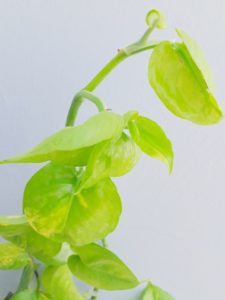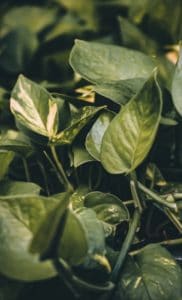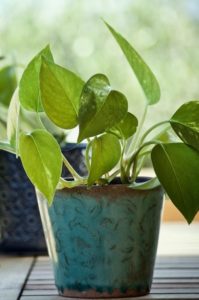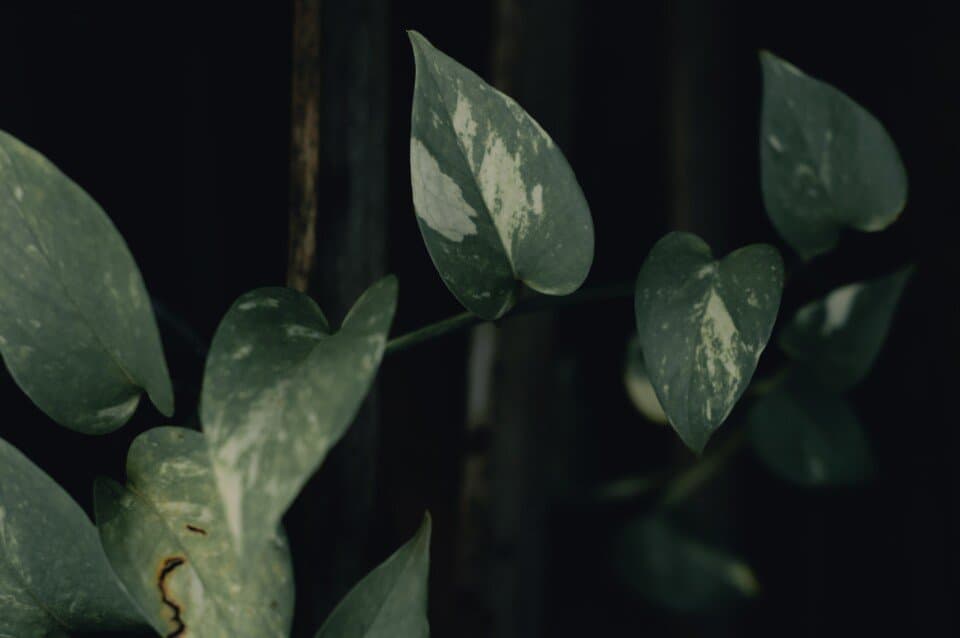Some links in the post are affiliate links and I get a commission from purchases made through some links found in the post.
Epipremnum aureum, more commonly known as Pothos or Money plant, is a rife house plant in temperate regions but has also integrated itself into the tropical and subtropical forests worldwide, including northern South Africa, Australia, Southeast Asia, South Asia, the Pacific Islands, and the West Indies.
It can easily be cultivated at home but is prone to pests and various diseases. This article gives a detailed outline of various diseases, their identification, and their treatment, so without further ado, let’s catch up!
Among the most famous pests include spider mites, mealybugs, whiteflies, scale, thrips, and aphids. Among others are fungus gnats, root rot, blight, and bacterial wilt.
Pothos are especially susceptible to pests like spider mites, mealybugs, thrips, whitefly, and fungus gnats, while diseases like root rot and bacterial wilt are far less prevalent.
Whether the bug was bought into the house by an open window or from the nursery, don’t worry!
Because they can be treated by simple methods, including chemicals like insecticides and pesticides, as well as other natural remedies.
That is not it because we have got all the information you need to care for your Money plant, which even includes methods of stopping them from returning shortly. So hold on to this article to get all the insights into Pothos pests and diseases.
Pothos Pests and Diseases
Below are listed all the predominant pests you should protect your houseplant from, along with their identification and treatment:
Spider Mites
 First on the list, they are tiny and not detectable with normal vision. They are 1/20 inch in size and are distant relatives of spiders that spin small, delicate webs underneath foliage or corners of stems.
First on the list, they are tiny and not detectable with normal vision. They are 1/20 inch in size and are distant relatives of spiders that spin small, delicate webs underneath foliage or corners of stems.
Although they may seem like white dots to your naked eye, they are red or brown. During the early stages of Infestation, leaves show numerous red or brown dots that eventually cover the entire leaf to give it a yellow color.
Small white webs are seen on the underside of the leaves that wreak havoc on the plant. They feed on the plant, causing them to fall off. Other symptoms include stunted growth.
One thing you must take care of before starting the treatment is to make sure that the spiders are still intact to the leaves.
More often than not, symptoms show long after the original pest have withered away.
Hold a sheet of white paper below the affected leaves and jiggle them lightly. You will see specks that look like ground pepper falling onto the paper. Treat infected parts by rubbing alcohol only after you have pruned them.
Natural predators like spider mite destroyers, ladybugs, lacewings, or pirate bugs can be used for outdoor plants, while insecticides are also a viable solution. Non-toxic botanical pyrethrin or miticide is also a practical cure.
Scales
Next up is one of the most destructive insect toxins. These brown bugs are most frequently found on the stem and give leaf nodes-like appearance.
They are minor, 1/16-1/8-inch long, circular, or oval flat bugs that suck the sap out of the stem, thus interfering with the transport system of your plant.
Although multiple varieties of scales can affect your flower, they all start as crawlers. Common sites of bug attack include joints or the underside of the leaves.
After finding a suitable feeding spot, they don’t move and form hard, oval brown shells that look like bark. Yellowing and deformed leaves are a routine observation due to the sucking of sap along with stunted growth.
Ants or sooty molds maybe be spotted because they secrete honeydew. Other indicators include paling of your Money plant along with sickling and drooping.
Before nursing, the infected plant must be isolated quickly because scales spread rapidly. Scale off leaves and stems using gentle scrubbing.
Then use alcohol to treat the affected areas. During spring or winter, insecticides such as neem oil and horticultural oil can be utilized, while dormant oil is preferred in winters.
Use insecticidal soaps if you prioritize homemade alternatives, and apply baking soda if your plant has attracted molds or fungus gnats.
Scales can be difficult to get rid of so if insecticides don’t work, one may have to dump out their houseplant.
Whiteflies
Fly-like insects that don’t fly, Yes! Whiteflies are soft-bodied insects with wings that don’t fly. Like Aphids, they suck vital fluids of your houseplant.
They are tiny, around 1/12-inch long, and roughly triangular, often forming colonies with eggs underneath the leaves.
An elementary method of checking for whiteflies is to shake your plant and observe if any bugs come flying out of the under-surface of the leaves.
These are found prominently around the veins. Since they also suck the sap out of your Money plant, they cause stunted growth.
They ooze honeydew that attracts ants and fungus, leaving a sticky substance, sooty mold, on the leaves. Meanwhile, the leaves turn pale and wilt off.
A habitual method to remove whiteflies is to use a water hose. A strong water spray will draw out most of the adults, nymphs, and eggs. Another possible solution is spraying in the evening with insecticidal soap.
Outdoor whiteflies can be eliminated by lacewings, ladybugs, yellow sticky traps, and other natural predators, or alternatively, spraying with neem oil is also a satisfactory antidote.
Aphids
 Next up on the list, they are tiny, 1/16-1/8-inch long, soft-bodied, and pear-shaped bugs that can be winged or wingless.
Next up on the list, they are tiny, 1/16-1/8-inch long, soft-bodied, and pear-shaped bugs that can be winged or wingless.
They can be black, white, red, or yellow in appearance. Hard to spot in isolation, they can only be identified in clusters hence making its medication a diligent task.
One of the most prevalent methods to identify Aphids is to look for a white colony on the under-surface of the leaves. They crawl or fly from one plant to another comfortably and are detectable on the stem.
They love sucking the sap of tender foliage, which results in distorted leaf growth. The resultant leaves are mostly wilted and distorted.
Furthermore, honeydew attracts ants, sooty mold, and fungus gnats. A single Aphid sucking on your plant isn’t such a hackle.
Still, they reproduce very quickly, often becoming enormous colonies in a short period, thus wounding your plant if left untreated.
How to treat them? Well, minor infections can be dealt with by hand, while individual leaves can be sponged in a sink.
Among the several techniques to counter them, the most customary is to wipe them away, remove severely damaged plant material or use sticky traps to capture them.
They can be knocked off by alcohol dipped cotton swab. Homemade insecticides are also beneficial.
Blend 1 teaspoon of cayenne pepper, 1-small onion, one tablespoon of non-detergent dish soap, 1 quart of water, and 1-bulb of garlic.
An insecticidal spray can also be utilized with a focus on the underside of leaves or alternatively, a chemical spray that boasts pyrethroids, pyrethrins, or imidacloprid.
Thrips
Another pest with harmful effects to your pothos. They are pale-colored, fringe-winged bugs that are known for laying their eggs on the leaves.
Unseen to a human eye, they are less than 1/5-inch (5mm) long and are as wide as needles. A prevalent practice is to detect them while watering your Money plant.
Moving on, how does one know thrips have ambushed their plant? Well, the most frequent indication of a Thrips attack is the appearance of white or silver streaks on the foliage.
As the pest spreads, these streaks turn from silver to brown. Distortion of growth points like shoots and new leaves is seen along with small brown holes in leaves.
Now moving on to the remedies, we have insecticidal soap, spray with neem oil, horticultural oil, or those containing pyrethrins.
A point to ponder is that thrips infect both the plant and the soil. Henceforth, both of them must be treated one by one.
Another possible medication is the addition of insecticides in the potting mix to treat the soil. Pruning infected foliage is requisite to ensure the healthy blooming of your plant.
Fungus Gnats
 The rearmost pests that you must keep a close eye on are Fungus Gnats. Known as opportunistic pests, they usually invade your plant when it has grown weak or is heavily diseased.
The rearmost pests that you must keep a close eye on are Fungus Gnats. Known as opportunistic pests, they usually invade your plant when it has grown weak or is heavily diseased.
Dubbed as the most annoying pests by some, they prefer to live in a warm and humid environment, habituating the top 2-3 inches of the soil and feeding on fungi, plant roots, and decaying materials.
They are typically spotted when sap-sucking bugs like mealybugs leave honeydew on the leaves. Adult Fungus Gnats are tiny, 1/8-inch long, delicate mosquito-like bugs.
Unlike many other pets, they are noticeable as black or greyish flies. They wander around the Pothos when disturbed and will probably stroll around your head if you get too close.
They bring about wilting and yellowing of leaves, and the plant exhibits stunted growth and loss of vigor.
How can one attend to them? That is an easy endeavor. One precaution you must keep in mind is avoiding waterlogging the plant because dry soil kills the eggs.
Adult Gnats can be caught using sticky tape, and top this off with a hose to kill any remaining insect. Insecticides containing horticultural oils, soaps, and neem are also beneficial.
Root rot
One of the most frequently occurring diseases of the Money plant is caused by various species of fungi, most commonly Pythium.
The most prevalent basis is the retention of too much moisture, which happens when you overwater the soil, lay it in the wrong pot, or under the wrong conditions.
Recurrent signs and symptoms include mushy stems with black rot, established plants having yellow leaves, and cuttings with a poor root system.
Root rot is burdensome to cater to once it has taken hold. One possible remedy is repotting your plant while trimming the infected roots.
A fungicide can also be utilized. A day-to-day saying is that prevention is better than cure, and the same is true with root rot. Avoid waterlogging, thus protecting your roots.
Blight
Blight affects Pothos because it prefers a warm and humid environment. Among the most common blight symptoms are wilting and yellowing of leaves along with bumps of fungal matter known as a sclerotium, typically found on the stems.
Although not habitual indoors, it can spread from outdoors, and care must be taken to safeguard your Money plant from it.
Stem Rot
Next disease we have is caused by Rhizoctonia, a fungus. Among the recurrent indicators, we have the deterioration of stem at the soil level.
Under moist conditions, a fine webbing of fungal growth can be observed on the soil surface adjacent to the infected stem.
Treatments include clearing the soil of pathogens. The potting mix must be cleared to ensure the healthy growth of the plant.
Bacterial Wilt
Lastly, we have Bacterial Wilt. Caused by Ralstonia solanacearum, it also spreads in a warm and humid atmosphere. Leaves turn yellow with their stems turning brown and their veins becoming black.
Luckily an easy test to identify bacterial wilt is to Snip off an affected part of the stem and place it in a glass of water. If a substance oozes from the stem, it is infected with Bacterial wilt.
Final Thoughts
 Pothos, or Money plant, is an easy-to-cultivate houseplant. Although more popular in temporal regions, it has consolidated itself in tropical regions as well.
Pothos, or Money plant, is an easy-to-cultivate houseplant. Although more popular in temporal regions, it has consolidated itself in tropical regions as well.
As with all house plants, the pothos is particularly prone to various diseases and pests. Some of them are more recurrent than others.
These include Aphids, Thrips, Whiteflies, Spider Mites, Scales, Fungal Gnats, etc., while the diseases include Bacterial Wilt, Root rot, Blight, and Stem rot.
All of these diseases and pests have distinguished methods of identification along with particular remedies to help save your pothos.
One must have all the particulars before trying to cure a house plant, and only a proper knowledge of these pests and diseases and their cure can help your pothos bloom in its true sense!
About the Author:
Saad Ansar
Saad is an avid gardener himself and is a great lover of plants, animals, photography, & people. Currently, he is focused on photographing indoor plants & captioning beautiful outdoor sceneries. He writes and rewrites in-depth articles on nature and science.


